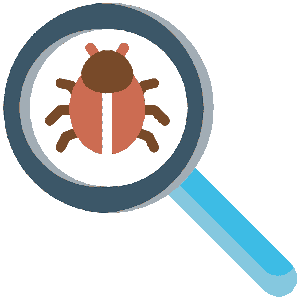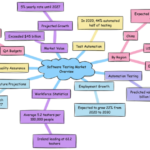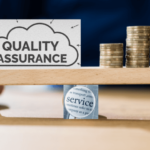
Testing Staff Augmentation fills your team’s gaps with expert QA analysts. Optimize software quality without the long-term commitment.
When it comes to software development, having a robust quality assurance (QA) team is crucial to ensuring a successful outcome. However, many companies struggle with finding the right balance between project timelines and the need for extensive testing. This is where testing staff augmentation comes in.
Testing staff augmentation involves adding dedicated QA testers and software testing engineers to your team to support your project’s testing needs. It can help increase testing capacity, access specialized skills, and reduce time-to-market while improving overall quality. In this article, we’ll explore the benefits of testing staff augmentation and provide insights into how to effectively integrate augmented staff into your existing team.
Key Takeaways:
- Testing staff augmentation involves adding dedicated QA testers and software testing engineers to your team to support your project’s testing needs.
- It can help increase testing capacity, access specialized skills, and reduce time-to-market while improving overall quality.
- Effective integration of augmented staff into your existing team is critical to ensuring successful project outcomes.
The Importance of Testing Staff Augmentation
Software development projects face numerous challenges, and one of the most significant is ensuring that software products meet the required quality standards. However, without adequate testing resources, it is challenging to achieve the desired outcomes. This is where testing staff augmentation comes in.
Testing staff augmentation involves hiring QA professionals to supplement your existing team during critical phases of a project. By doing so, the team gains access to additional resources, expertise, and experience.
Augmenting your testing team can help you identify and resolve software defects faster, which leads to reduced time-to-market and better quality products. It also enables your team to focus on core activities while the QA testers handle the testing aspect of the project. This approach can result in increased productivity and cost savings.
Therefore, testing staff augmentation is an essential component of project success, and it is necessary to consider it when embarking on any software development project.
Benefits of Testing Staff Augmentation

Testing staff augmentation provides a range of benefits that can significantly enhance your project’s success. Here are some of the key advantages:
- Increased Testing Capacity: Augmenting your testing team with dedicated QA testers and software testing engineers can greatly increase your testing capacity, allowing you to execute more test cases and cover a wider range of scenarios.
- Access to Specialized Skills: Testing staff augmentation can provide access to specialized skills that may not be available in-house. This can help ensure more efficient and effective testing processes, especially for complex projects that require specific technical expertise.
- Reduced Time-to-Market: With more resources available for testing, you can reduce the time-to-market for your products and services. This can provide a competitive advantage and help your team meet tight deadlines without sacrificing quality.
- Improved Overall Quality: By augmenting your team with skilled QA professionals, you can improve the overall quality of your software and prevent defects and errors from occurring. This can help enhance customer satisfaction and minimize the risk of costly mistakes.
Benefits of Testing Staff Augmentation
“Augmenting your testing team can greatly increase your testing capacity, provide access to specialized skills, reduce time-to-market, and improve overall quality.”
QA Resource Addition: Finding the Right Fit
When it comes to augmenting your testing team, finding the right QA resources is crucial for project success. You need to ensure that the resources you are adding have the necessary skills and knowledge to work seamlessly with your existing team and meet your project’s specific requirements.
Here are some factors to consider when looking for QA resources:
- Language proficiency: Ensure that the added resources have the necessary language proficiency to communicate effectively with the existing team and stakeholders.
- Technical expertise: Look for resources with strong technical skills and experience working with the technologies and tools used in your project.
- Cultural compatibility: Consider the cultural differences between the added resources and your existing team. Look for resources who are comfortable working in a multicultural environment and are flexible enough to adapt to different work styles.
- Availability: Ensure that the added resources will be available for the duration of your project and can commit to working the necessary hours to meet your project requirements.
By carefully considering these factors and thoroughly vetting potential QA resources, you can ensure that you find the right fit for your team and project. At QATPro, we provide dedicated QA testers and software testing engineers who are highly qualified and experienced in working with diverse technologies and tools. Our team of experts is dedicated to ensuring your project’s success and delivering optimal software testing outcomes.
QA Team Support: Enhancing Collaboration
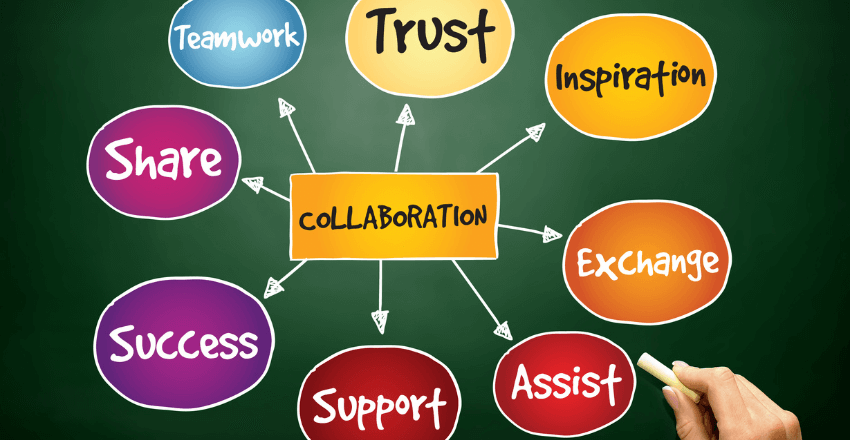
Effective collaboration is a critical component of successful software testing. When augmenting your team with additional QA resources, it’s essential to ensure that everyone is on the same page and working together towards the same goals. Building a cohesive team environment that encourages open communication and knowledge sharing is key to achieving optimal outcomes.
By leveraging testing staff augmentation, you can access the expertise and skills necessary to enhance collaboration within your team. Augmented staff can offer fresh perspectives and insight, while also providing valuable support and resources. Clear communication channels, such as video conferencing and instant messaging, can facilitate effective collaboration even when working remotely.
It’s essential to establish shared goals and objectives with all team members, augmented or not, to foster a sense of unity and common purpose. Encouraging team members to share knowledge and expertise can also help to identify new opportunities for growth and improvement. By working together, you can achieve superior testing results that are not possible with a fragmented or disorganized team.
Leveraging Outsourcing for Testing Staff Augmentation
Another option for testing staff augmentation is outsourcing. This approach offers several benefits, including cost-effectiveness and access to a global talent pool. Outsourcing allows companies to work with QA professionals from different parts of the world, leading to diverse perspectives and fresh ideas.
When outsourcing, it is crucial to partner with a reliable company that has a proven track record in software testing and a deep understanding of your project requirements. Communication channels and project goals should be clearly defined, and progress tracking should be transparent. Additionally, it’s essential to ensure that intellectual property rights are protected and that data protection policies are in place.
Outsourcing testing staff augmentation can be an effective solution for companies seeking to increase their testing capacity and bring in specialized skills without incurring the full cost of hiring an in-house team.
Managing Project Timelines and Expectations
One of the key challenges of testing staff augmentation is managing project timelines and expectations. When adding new resources to the team, it’s important to ensure that they are integrated seamlessly into the workflow without causing delays. This requires clear communication channels, progress tracking, and accountability measures.
One effective approach is to establish a project plan that outlines the specific tasks, timelines, and expectations for each team member. This plan should be shared with all relevant stakeholders and reviewed regularly to ensure that everyone is on the same page.
In addition, it’s important to have a system in place for tracking progress and identifying potential bottlenecks. This can be achieved through regular status updates, progress reports, and performance evaluations. By monitoring progress closely, you can identify issues early on and take remedial action before they become major problems.
Effective Communication Channels
Effective communication is critical when managing project timelines and expectations. This includes both formal and informal channels of communication. Formal channels may include regular meetings, progress reports, and status updates. Informal channels may include email, instant messaging, and phone calls.
It’s important to establish clear communication protocols upfront to ensure that everyone is on the same page. This can include setting expectations for response times, identifying who should be included in meetings, and establishing guidelines for sharing information.
Progress Tracking and Accountability Measures
Another key aspect of managing project timelines and expectations is having a system in place for tracking progress and holding team members accountable for their work. This can include setting deadlines for specific tasks, tracking progress against these deadlines, and identifying potential bottlenecks that may be causing delays.
In addition, it’s important to have clear metrics in place for measuring success. This can include metrics related to quality, efficiency, and customer satisfaction. By regularly monitoring progress against these metrics, you can identify areas for improvement and take action to address any issues that are identified.
Overall, managing project timelines and expectations requires a combination of clear communication, progress tracking, and accountability measures. By implementing these best practices, you can ensure that your project stays on track and that your team is able to deliver high-quality software on time and within budget.
Overcoming Challenges in Testing Staff Augmentation

While testing staff augmentation can provide numerous benefits, it is not without its challenges. It is essential to identify and address any potential bottlenecks to ensure a successful outcome.
Challenge 1: Communication Barriers
When augmenting your team with remote resources, there may be language and cultural barriers that can impede effective communication. This can lead to misunderstandings, delays, and decreased productivity.
Solution: It is crucial to ensure that remote resources have the required language proficiency and cultural compatibility to integrate smoothly into your team. Clear communication channels, regular check-ins, and encouraging a collaborative environment can also help overcome these barriers.
Challenge 2: Integration and Training
Integrating new team members can take time and effort, especially when they are remote and require specialized training. This can impact project timelines and create bottlenecks in the workflow.
Solution: It is important to have a comprehensive onboarding process in place and provide clear role definitions and responsibilities. Encouraging knowledge sharing and providing proper training can also help ease the integration process and ensure that remote resources are productive quickly.
Challenge 3: Quality Control
When augmenting your team, it can be challenging to maintain consistent quality standards throughout the team. Different resources may have varying levels of expertise and experience, which can impact the overall quality of work.
Solution: Clearly defined quality standards, regular feedback sessions, and performance evaluations can help ensure that all resources perform at a consistently high level. Providing access to specialized tools and resources can also help maintain quality standards.
Best Practices for Testing Staff Augmentation
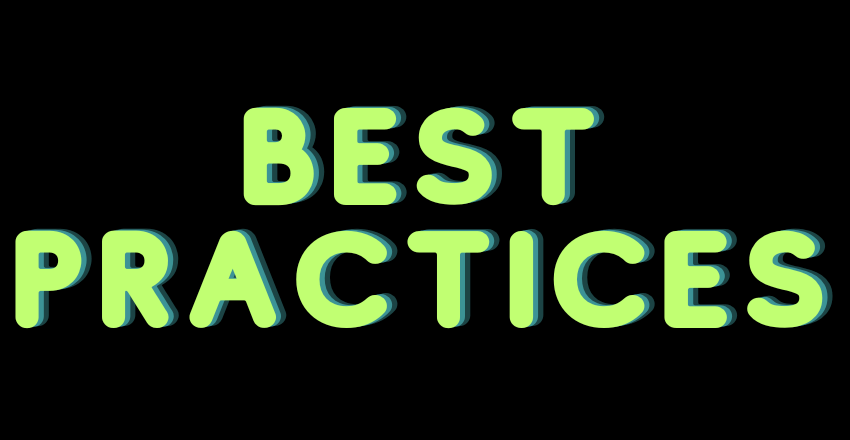
Implementing testing staff augmentation effectively requires careful planning and execution. Here are some best practices to ensure success:
- Define clear roles and responsibilities: Clearly define the roles and responsibilities of the augmented team members and ensure that the existing team members understand their respective roles and responsibilities as well. This will help streamline workflows, avoid confusion, and ensure accountability.
- Foster a collaborative environment: Encourage open communication, knowledge sharing, and teamwork. Co-create workflows and processes that leverage the strengths of each team member. This will help build a cohesive team culture and enhance the quality of the work being done.
- Continuously improve: Regularly evaluate the performance of the augmented team members and provide constructive feedback. Use metrics to track progress and identify areas for improvement. Encourage continuous learning and skills development to ensure that the team is equipped with the latest knowledge and tools.
- Ensure cultural compatibility: When augmenting your team with resources from different parts of the world, ensure that the team members understand and appreciate cultural differences. Provide cross-cultural training to ensure that the team is respectful of each other’s customs and norms.
- Ensure technical expertise: Choose testing staff augmentation resources with technical expertise that aligns with your project needs. This will ensure that the team can effectively contribute to your project and deliver high-quality results.
Conclusion
Testing staff augmentation provides a valuable solution for teams struggling with inadequate resources. It offers numerous benefits, including increased testing capacity, access to specialized skills, reduced time-to-market, and improved overall quality. With the right QA resources added to your team, you can enhance collaboration and build cohesive workflows that help ensure project success.
QATPro is a leading provider of dedicated QA testers and software testing engineers. We understand the challenges faced by project managers and offer flexible, cost-effective solutions for augmenting your team. Our talented professionals are proficient in multiple languages, have the technical expertise necessary to deliver quality results, and are culturally compatible with your team.
FAQ

Q: What is testing staff augmentation?
A: Testing staff augmentation is the process of adding external QA resources to your team to supplement your existing testing efforts. It involves hiring dedicated QA testers or software testing engineers who work remotely or onsite, providing additional testing capacity and expertise.
Q: Why should I consider testing staff augmentation?
A: Testing staff augmentation can enhance your project’s success by addressing the challenges faced by teams without adequate testing resources. It offers increased testing capacity, access to specialized skills, reduced time-to-market, and improved overall quality.
Q: How can testing staff augmentation enhance collaboration within the team?
A: By augmenting your team with dedicated QA resources, you can improve collaboration by fostering effective communication, knowledge sharing, and building cohesive workflows. This facilitates seamless integration and enhances the overall efficiency and effectiveness of the team.
Q: What are the benefits of outsourcing for testing staff augmentation?
A: Outsourcing for testing staff augmentation provides advantages such as cost-effectiveness and access to a global talent pool. It allows you to leverage expertise from different regions and benefit from diverse experiences, ensuring optimal testing outcomes.
Q: How can I ensure a smooth integration of augmented staff into my existing team?
A: To ensure a smooth integration of augmented staff, it is important to have well-defined onboarding processes, establish clear role clarity, and promote a positive team dynamics. Open communication channels and continuous feedback also play a crucial role in facilitating integration.
Q: How do I effectively manage project timelines and expectations with augmented staff?
A: Managing project timelines and expectations with augmented staff requires effective communication channels, progress tracking mechanisms, and accountability measures. Setting realistic expectations and maintaining regular updates are key to ensuring successful project management.
Q: What are some common challenges in testing staff augmentation and how can they be overcome?
A: Common challenges in testing staff augmentation include communication gaps, cultural differences, and performance evaluation. To overcome these challenges, clear communication, continuous feedback, and regular performance evaluations are crucial. Creating a collaborative environment can also help address potential issues.
Q: What are some best practices for implementing testing staff augmentation effectively?
A: Best practices for implementing testing staff augmentation effectively include defining clear roles and responsibilities, fostering a collaborative environment, encouraging continuous improvement, and establishing effective communication channels. These practices ensure smooth integration and maximize the benefits of augmented staff.
Tony, a revered technical author and expert in software testing and quality assurance, has his roots in Texas. He embarked on his professional journey at Caltech, diving deep into Informatics. This laid a robust academic groundwork, further cultivating his analytical prowess and understanding of software testing and quality assurance principles.
Post-graduation, Tony’s career took flight at GE. As a Senior QA professional, he was integral in maintaining software system reliability and performance. His intricate strategies facilitated numerous project successes.
Craving new challenges, Tony then moved to eBay. Here, his ability to identify risks and execute effective testing processes ensured seamless user experiences. Subsequently, he joined Uber, ensuring the safety and reliability of the company’s software platforms through efficient testing frameworks.
Despite professional feats, Tony enjoys a grounded personal life in Texas, nurturing his two sons and indulging in local cultural events. As a technical author, his insightful writings have helped shape the industry, guiding countless professionals. Tony’s enduring dedication and expertise continue to influence software testing and quality assurance, marking him as a true pioneer in the field.
